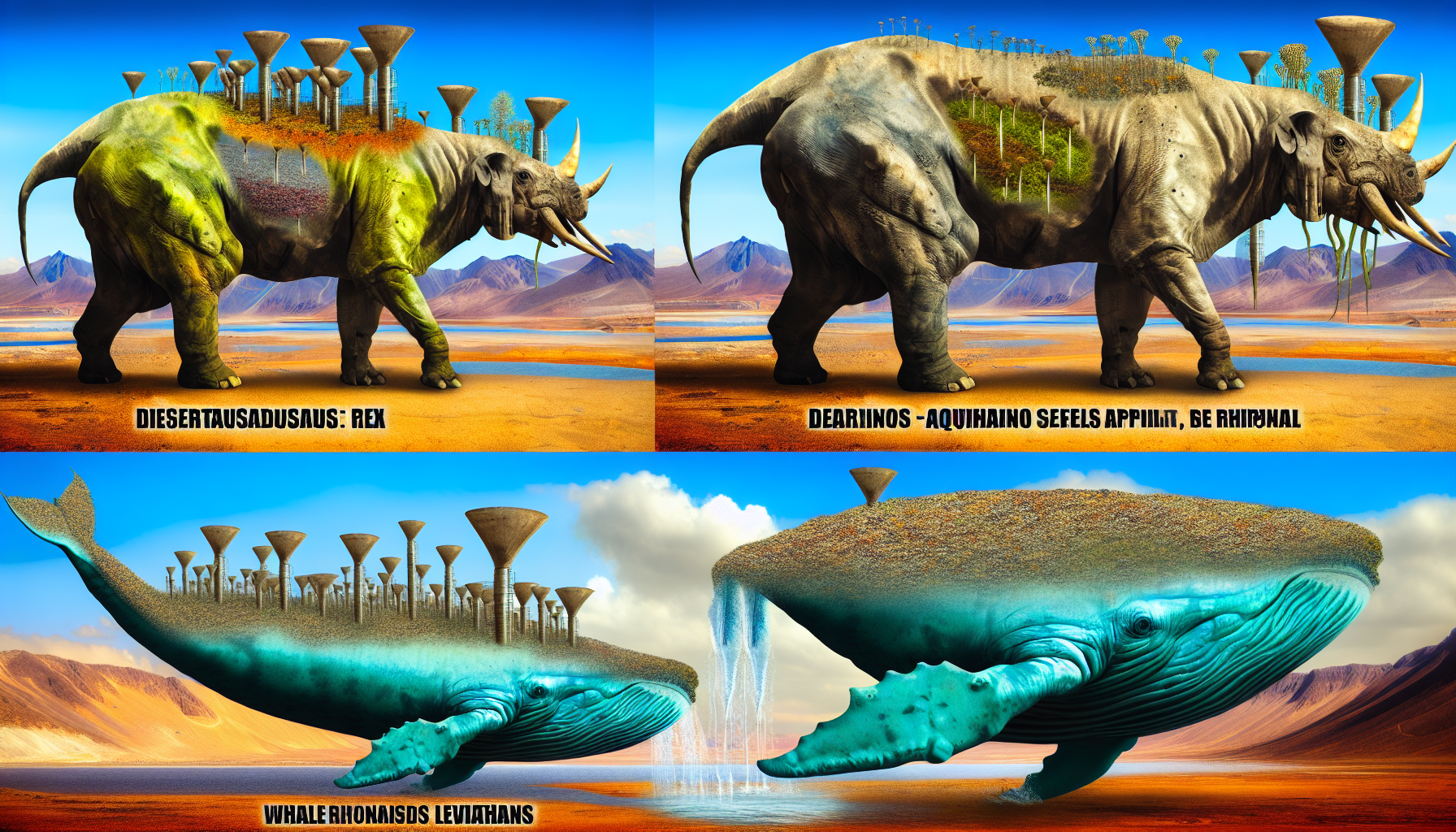Amidst the desolate stretches of a planet gasping for redemption, the titans of nature lumber across the parched expanses. With each thunderous step, they carry the heavy burden of a world beaten into submission by relentless climate catastrophes. These are not the fabled creatures of myth, but the ‘Desertasaurus rex’, ‘Aquarhinos’, and the enigmatic Leviathans of the deep, whose tales of adaptation have been narrated in the ‘New Behemoths of the Barren’.
The question looms over the cracked landscape like the specter of a cloudless sky: can these emergent behemoths serve as harbingers for ecosystem revival? An inquiry not into their existence, but their role. Marvel not at the reflective skins, the corrosion-resistant hides, and advanced filtration systems – but ask if they herald an arcadian turnaround.
Their survival, a sliver of natural selection’s silver lining, presents an eerie juxtaposition – a grotesque mockery of the lost biodiversity they stride over. Indeed, their adaptation speaks less of nature’s resilience and more of its desperation. Their mere presence stands as a chilling testament to the cosmical farce nature’s play has become. But the stage is set for an uncanny twist.
Could these leviathans of the land and sea be unwitting architects of change? Their very biology might cultivate scant oases in these harrowing deserts. ‘Desertasaurus rex’, with its massive feet and heft, potentially aids in seed dispersal and soil aeration, unintentionally engineering pockets of fertility. ‘Aquarhinos’ trudge through arid territories, hollowing out potential water catchments. And the Leviathans, filtering the choked oceans, might just be facilitating phytoplankton blooms upon whose tiny shoulders rests the planet’s precarious breath.
A beacon of hope or a false messiah? The evidence is conflicting and the portrait of the future remains a nebulous scene. Critics contend that even if these colossal creatures are reseeding the dead earth, their actions are band-aids on a gaping wound. Proponents argue that these band-aids are the first stitches in a planet’s self-mending fabric.
Notwithstanding these divergent views, Earth’s narrative is steeped in its biological keystones – through the epochs, life has found itself hinging on the doings of a contextual few. Could it be that nature, in its most desperate hour, has cast these behemoths in the role of ecological saviors? Could their survival be less a quirk and more a strategy, a relentless gamble in the face of existential threat?
Perhaps they are not mere survivors, but the forerunners of a monumental dialogue between life and the altered world – a primeval murmur hinting at a semblance of stability. Or perhaps they serve as the final act of a tragedy, a sober backdrop against which we measure our own contribution to the planetary plight.
In a world where hope has become the rarest of commodities, the tale of behemoth fauna feels like an echo of forgotten potential. As we gaze upon their monumental silhouettes against the cracked horizon, they may not promise an ecosystem revival – but in them, resides the enduring power of adaptation, the prospect of change, and the enduring question: Is life once more contorting, unfathomably, to fit the shackles of a wounded world?
The behemoths march on, indomitable, unknowable. As their heavy tread resounds across the derelict earth, we are left to wonder, we are left to ponder, and most vitally, we are left to act. The stage is not yet empty, and the final bow has not been taken – the act of revival, if any, hinges on a script that is still being written.
